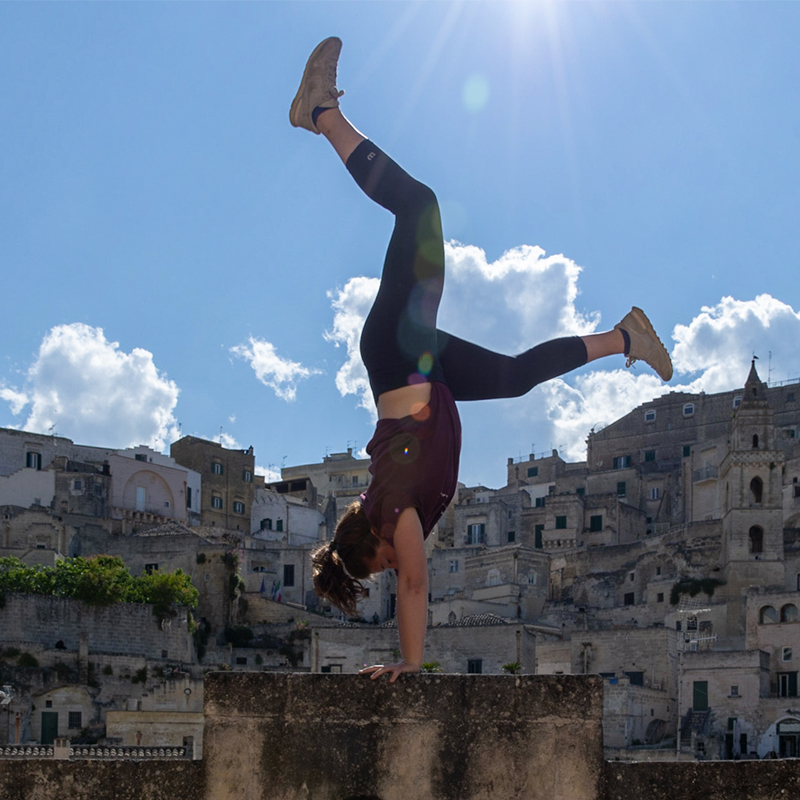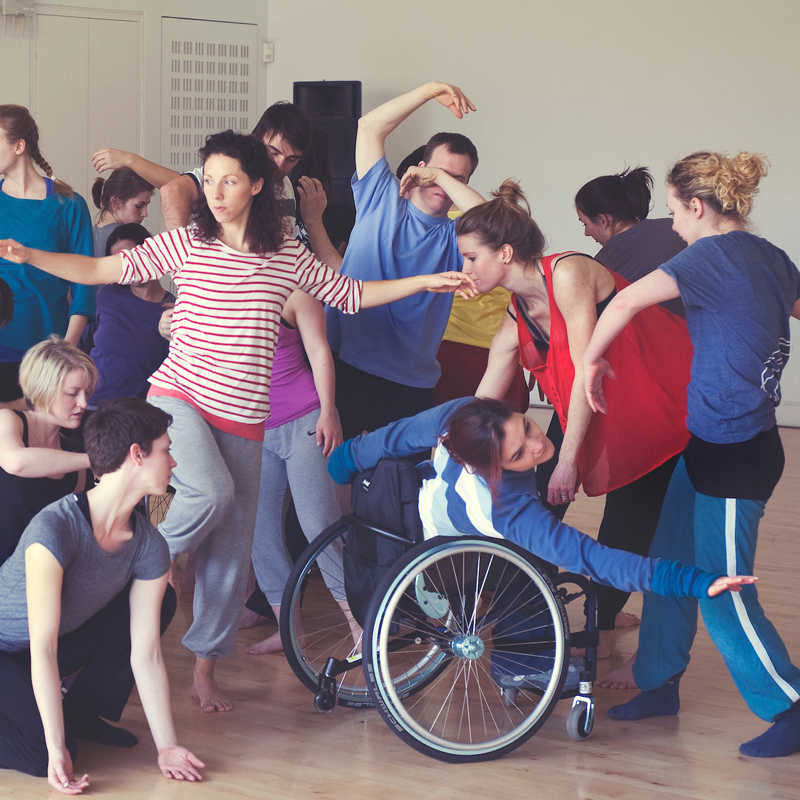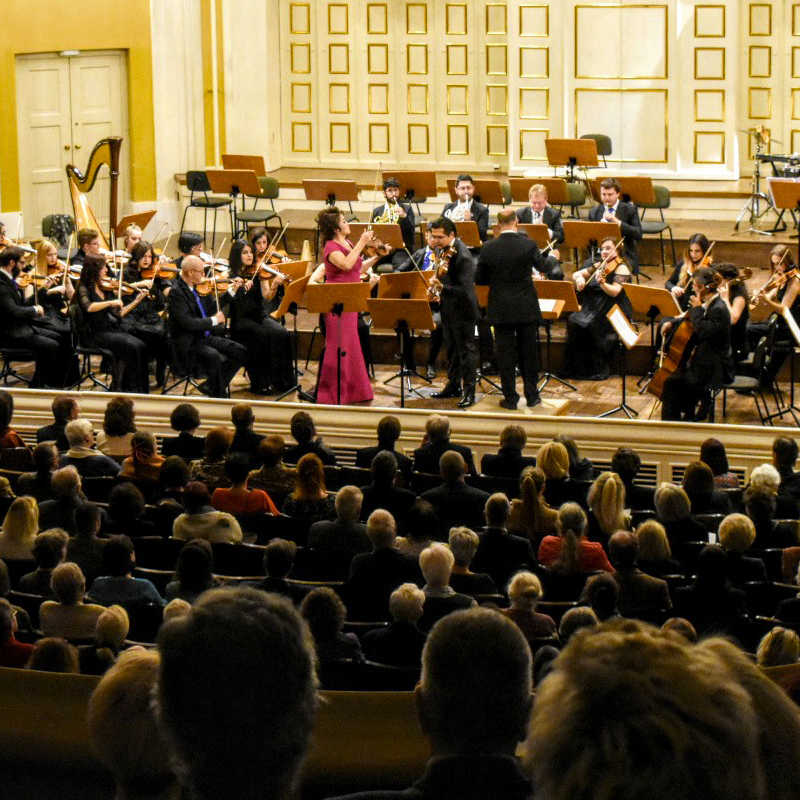Home
A cultural revolution in sport and street art

- Immagine condivisione Facebook:
Sport and urban art merge, energise and transform public spaces, so people can enjoy the city beyond the historic centre. This is the guiding spirit of Open Playful Space, a project produced with Uisp Basilicata, which culminated in the Festival that ended last week.
This urban regeneration operation uses games, sport and urban art in a new way, by discovering and regenerating spaces for people to experience as accessible cultural places.
From 29 May to 2 June, with a preview on the weekend of 25 and 26 May, a large number of residents were involved in generating a new vision of public spaces and returning them to the whole community by highlighting what is usually invisible.
The festival preview featured a variety of games and circus arts, attracting the attention of children and families. The preview concluded with a 5-a-side football tournament, bringing together young people from Matera, European volunteers and migrants in an atmosphere of friendship and solidarity.
Since 29 May the Festival has taken over the streets, squares and parks of the city with taster workshops and advanced ones for a more experienced public. The two symbolic places of the project were Piazza Cesare Firrao and Piazza degli Olmi, where regeneration work had already been introduced through street art, with the collaboration of students from the Istituto Comprensivo Bramante and the residents’ association of Piazza degli Olmi.
During the Festival street art was relaunched through two art installations. On the steps of the skating rink at the Parco Papa Giovanni Paolo II a brand new work was designed and made specifically for this space by Giorgio Bartocci, a street artist who explores the complex relationship between people and the local area. Bartocci enhanced the urban architecture that resembles an upturned boat with signs and symbols in gold, silver and copper.
The second installation was by designer and muralist Skolp, who added a vertical work to the actions he performed in previous months in Piazza degli Olmi, continuing with regeneration work on a public space belonging to a community that has already been involved in Matera 2019 activities. This artist from Bari signed his work with the geometric shapes and composition principles characteristic of his art, while students from the Scuola Bramante ‘adopted’ the columns in the square, using paint and varnish.
All of the Festival workshops were coordinated by leaders of international standing. The Art Du Deplacement workshops (an arts/sport discipline that combines freedom of movement with free thought) were coordinated by Laurent Piemontesi, one of the founders of this discipline which was established in France in the 1980s, with Muvt ASD. Lots of enthusiasts and keen participants got to grips with ADD and learned to overcome obstacles, walking and running along urban routes with amazing acrobatics, jumps and climbs.
The workshops focusing on circus arts, juggling and capoeira also featured professional artists with many years of experience, like the young Anglo-French family The Sprockets, the Pachamama company and the Brazilian Mestre Aranha from the Sao Salomao centre.
On the evenings of 1 and 2 June, the final event of the Festival was a performance in the Parco Giovanni Paolo II and Parco del Castello Tramontano of the multi-disciplinary show TransformAction directed by Pino Di Buduo, founder of the Teatro Potlach, a renowned and long-established Italian contemporary theatre company.
The concept of TransformAction derives from the local area where it is performed. Green spaces and open spaces become a natural stage for the performance, which follows a winding artistic path for half a kilometre. The spectators become travellers in search of performances located in various places in the two parks, which are completely transformed by lighting, sets and projections on the central keep and lateral towers of the Castello Tramontano.
Performances included juggling, acrobatic dancing, stilt walking and circus arts accompanied by percussion rhythms, live music and Brazilian songs. On previous days a peaceful colourful caravan went through the city’s streets, astonishing local people with this invasion of their space by music and acrobatics.
Through Open Playful Space, Uisp Basilicata and all the partners involved want to send a clear message: the residents themselves can be the real protagonists of change, starting with young people capable of regenerating urban spaces and relationships by means of sport and street art. This great social phenomenon starts from the local area and drives a cultural revolution that improves lifestyles and health, representing an opportunity to which everyone has a right.
The project was carried out in collaboration with the following partners: ISCA, Uisp, Teatro Potlach, ADD Umbria Academy, Muvt ASD, Momart Gallery, Lacaposciuc ASD, TeatroPAT, Associazione Giallo Sassi, Associazione Joven, Basilicata Board and ASD Sk8ong Team.
Public Call - Inclusive Dance Workshop for the project Movimento Libero

Update 4 July 2019
Selection of participants for the Inclusive Dance Workshop for the project Movimento Libero is now closed. Below is a list of the admitted candidates.
Update 20 June 2019
The deadline for the call has been extended. Applications can be sent up to and including June 27th. Consequently, the outcome of the selection is also postponed to the 4th July.
This inclusive dance workshop is the second phase of the project MOVIMENTO LIBERO that explores the relationship between art and disability. This ‘Dance Workshop’ is a chance for disabled and non-disabled participants to explore the exciting contribution to dance made by disabled dancers.
Stopgap - Community Dance:
The workshop will be led by the world-renowned Stopgap Dance Company (U.K) who create contemporary dance productions with a cast of disabled and non-disabled dancers. It values a pioneering spirit and is committed to making discoveries about integrating disabled and non-disabled people through dance.
Stopgap conducts creative learning projects and workshops for schools and local communities, to demonstrate how dance is accessible to all and to observe how integrating disabled and non-disabled people through such projects promotes active citizenship and social cohesion.
By filling in this form, you can apply for the Public Call to participate in the MOVIMENTO LIBERO inclusive dance workshop, led by Nadenh Poan and Siobhan Hayes, members of StopGap Dance Company, within the framework of Nessuno Resti Fuori - a theatrical, city and citizens festival. The Workshop is scheduled from 23 to 27 July 2019, it will be a 5-day course animated by English artists and open to disabled and non -disabled people: it will represent a new vision of performative art, enhancing skills through artistic expression . The workshop concludes with a performative outcome, seen as a restitution to the community, scheduled for 27 July and which will be repeated on 19 October at the opening of Stopgap’s ‘Artificial Things’ dance production.
This public call is launched by the Matera-Basilicata 2019 Foundation, the project MOVIMENTO LIBERO is a co-production with the British Council and in collaboration with IAC - Centro Arti Integrate and Oriente Occidente Dance Festival.
Registration deadlines and conditions:
Registration will end on June 20, 2019. The outcome of the selection of participants will be published on www.matera-basilicata2019.it within 10 days from the end of the registration.
In a journey that leads citizens, both temporary and permanent, to become not only spectators but also active cultural builders, the selected candidates must be in possession of the Matera 2019 Passport in order to participate in the workshop. Concessions are available for disabled people.
Any travel, board and lodging expenses are at the expense of the participants.
Registration includes a commitment to participate in all the sessions of the workshop, the performance outcome of 27 July and the rehearsals and replication on 18 and 19 October.
Who is the workshop for and what is the selection criteria?
The laboratory is open to everyone, disabled and non-disabled people who are interested in exploring new forms of movement and relationship with their own body and with others.
Minimum age: 18 years
Maximum number: 20 people
Disability must not be an obstacle to participation, we guarantee full accessibility of the location in which the laboratory will take place. The workshop will be conducted in English with Italian translation. If necessary, additional communication assistance will be made available including Italian sign language.
The selection process will be carried out by the project partners and the laboratory conductors. We will use the registration form to evaluate:
- Your experience in the dance world: as a professional dancer, dance student, amateur dancer, spectator; (We know that disabled dancers have fewer opportunities, so we will consider "experience" in a very broad sense of the term)
- Your motivation to take part in this workshop;
- Your opportunities to apply the knowledge acquired in the laboratory in Basilicata and to share it within the local artistic sector and Italy;
- The general artistic context of the laboratory and public performance.
Laboratory
23 July - 27 July 2019 - from 9:30 to 13:00
Gym of the Istituto Comprensivo Pascoli - Primary School, via Lazazzera, Matera
Performative outcome July
27 July - afternoon/evening
Piazza Giovanni XXIII (in front of the church of San Pio X)
Performative outcome July
18 October - general rehearsals, time to be defined
19 October - show, time to be defined
Sala Pasolini, il Circo, Matera
Fill in this form to participate!
Matera 2019 and Doppiozero: five e-book articles on science and the arts

Science and the arts seen as products of biological and cultural evolution: a reciprocal source of inspiration and an important channel of communication. These are ideas that the Matera2019 programme explores with a view to defining the relationship between humanist culture and scientific culture, in particular through one of the themes of the European Capital of Culture application dossier’s cultural agenda: Distant Future. This theme focuses on the age-old relationship with space and the stars – a relationship that follows in the steps of Pythagoras, one of the most illustrious residents of Basilicata – and explores the ancient universal splendour of science.
This was the starting point for Schisi, a series of five e-books created with Doppiozero, in an online cultural magazine edited by Marco Belpoliti. The five e-book articles on science and the arts are curated by Agostino Riitano – a project manager supervisor for Matera2019 – and focus on five authors who investigate interdisciplinary aspects, combining the rigour of their research with particular attention to the accessibility of the texts. The first volume is by Mario Porro with the title 'Margins of Science'. You can download the book for free here.
Collaboration with Doppiozero will generate one issue per month up until September, when two projects from the cultural programme will be presented to the public, blending science and the arts together emblematically: Wave and Quantum Dance. This Matera2019 event benefits from collaboration with major Italian and European scientific institutions, including the ASI/Space Geodesy Center in Matera, Trieste 2020 European City of Science and CNR.
The series has one objective in particular, which is to chart a course between the humanities and the pure sciences.
Classical Music from Matera to Europe

One of the leading lights of the Lucanian revival – the Egidio Romualdo Duni Conservatoire in Matera – has performed in some of the most prestigious concert halls in Europe, even in Salzburg, Mozart’s home city!
For the Duni Europe project, produced with the Italian Chamber Music Society over four venues, Duni musicians took up the challenge of making chamber music accessible to everyone through a series of new international concerts. Following the great success of the performances held on 30 April at the Conservatoire’s Auditorium in Matera, on 1 May in the town of Ariano Irpino and on 3 May at Casale Monferrato in its magnificent Municipal Theatre, the orchestra performed in one of the most famous concert venues: the Mozarteum in Salzburg. The Symphony Orchestra of the Egidio Romualdo Duni Conservatoire of Matera, conducted by Francesco Di Mauro, was the highlight of a concert which opened and closed with two works by contemporary composers from Lucania: Antonello Tosto and Damiano D’Ambrosio.
The concert featured the soloists Aiman Mussakhajayeva (violin), Adolfo Alejo (viola), Chungwha Lim (soprano) and the piano duo Sergio Marchegiani and Marco Schiavo. The programme also included the following works by Mozart: Piano Concerto No. 10 for Two Pianos and Orchestra in E-Flat Major (KV 365), an aria from Don Giovanni (‘Mi tradì quell’alma ingrata’), the Sinfonia Concertante for Violin and Viola in E-Flat Major (KV 364) and two traditional Korean pieces, Dumulmori Arirang (Arirang of Love) by Geung-Soo Yim, and Mukungwha Arirang by Deok-Ki Chung. The versatile musician Antonello Tosto – who has composed music for various ensembles, including bands – dedicated his work to Matera, the city where he has studied and taught. In the Canto dei Sassi, Damiano D’Ambrosio – a composer from Lucania and tutor at several conservatoires – is inspired by his homeland, through music. The sub-title, Symphonic Postcards from Matera, is a suite for orchestra and reciting voice, which combines research and local tradition.
The ethnographical research, which brings people together through music, includes the two traditional Korean pieces. An Arirang is a Korean folksong, which has also listed by UNESCO.
Duni Europa combines musical traditions and cultures, which are expressed in the heart of the city that symbolises western music.






 The outcome of the selection 'Public Call - Inclusive Dance Workshop for the project Movimento Libero'.
The outcome of the selection 'Public Call - Inclusive Dance Workshop for the project Movimento Libero'.